Herbs are one of the popular options for gardens. They are especially popular for apartments with little outdoor space. Not only do they look and smell wonderful, they are incredibly convenient for cooking! There are few things that can take your cooking to another level than always having fresh, seasonal herbs on hand. Today we are going to discuss what herbs to plant in Spring so you can enjoy them for years to come!
For Melbourne gardens and balconies we recommend planting staple herbs including:
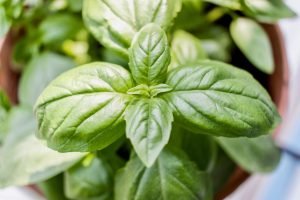
Basil
Basil is one of the best herbs to plant in Spring. It likes rich soil and positions in a sunny, sheltered area. Space out single plants with at least 20cm space each way. Greenhouse plants and those undercover will have softer leaves. Always pinch off flowerbuds. Harvest a few leaves at a time to keep the plant cropping.
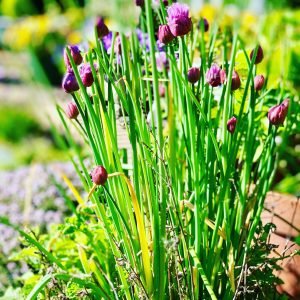
Chives
Chives are also great herbs to plant in Spring. They are happy in average, well-drained soil placed in full sun to partial afternoon shade. Place plants with 15cm space each way and will grow into a solid mass in 3 years. If you plant garlic chives, they can produce white, scented flowers. Cut these to use as decorations and to keep the chives from reseeding. Be careful as chives can become very invasive. It is best to harvest a year after planting. Gather handfuls in Spring to use in the kitchen.
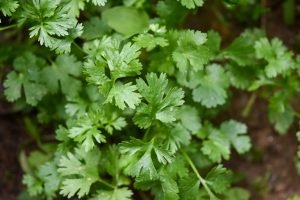
Coriander
Like chives, coriander likes an average, well-drained soil, though it does prefer composting. We recommend full sun to partial afternoon shade. Allow 20cm of space all around the plant. Thin seedlings to ensure proper spacing and eat the ones you thin. Harvest the leaves and leave the flowers to produce seeds for grinding.
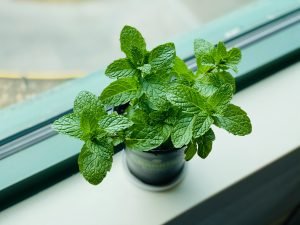
Mint
Mint is a wandering plant, so you need to keep it in check. Plant in average, well-drained soil in an area where you can easily maintain and curb the plant. It prefers full sun to partial afternoon shade. Ensure there is at least 20cm of space around the plant. Mint is easy to root from stem clippings stuck into moist soil. Frequently pinch mint back to keep the plant bushy and full while also delaying flowering. Spearmint and peppermint are the best for cooking. Gather sprigs as needed. Planting in areas with hard boundaries – like paths – can help stem the excessive growth of mint.
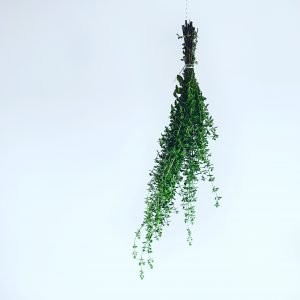
Oregano
Plant oregano in full sun to partial afternoon shade, in an easily accessible site. Soil should be average and well-drained. Plant with 20cm space around the plant. You can sometimes propagate oregano from cuttings or you can purchase a plant. Like mint, we recommend frequent pinching back to keep the plants bushy and full and to prevent flowering. It is moderately invasive so ensure it is grown in a pot or in an area with hard boundaries – like paths – like you would with mint. Gather sprigs as needed.
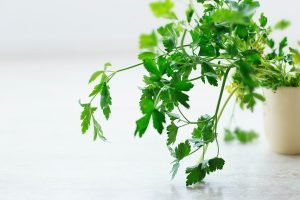
Parsley
Parsley grows best in average, well-drained soil that has been enriched with compost. Place them in full sun and drench plants in a water-soluble organic plant food monthly. Give plants 15cm space each way. Parsley germinates slowly so we recommend starting with young, purchased plants. Be careful not to damage the roots when transplanting.
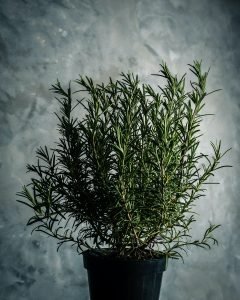
Rosemary
Rosemary prefers well-drained soil with compost dug in. sun is preferred but it will grow in most places. Drench the plants in a water-soluble organic plant food a month after planting. Each plant should have at least 20cm spacing each way. Growth habits varies by variety of rosemary which is why we recommend starting with a purchased plant. Pinch back frequently to keep bushy and delay flowering. Gather sprigs as needed.
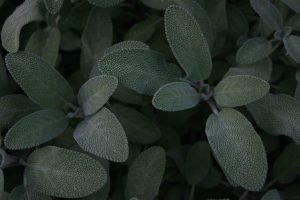
Sage
Like most herbs, sage loves average, well-drained soil enriched with compost and full sun. A month after setting the plants out or planting, drench in water-soluble organic plant food. Give each plant 30cm of space each way. Start with either a purchased plant or seeds grown indoors in late winter. One year old plants produce beautiful flowers and, if you grow sage in containers, it can be kept in a cool, indoor space – like a garage – through winter. Gather sprigs as needed in the kitchen.
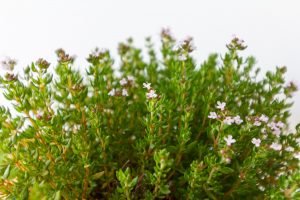
Thyme
Much like the other plants in this blog, thyme likes average, well drained soils that have been enriched with compost. Position it in full sun for best results. It is also very winter hardy and will become dormant from Autumn to Spring. Feed time a month after planting or setting out by drenching with a water-soluble organic plant food. Space plants out with at least 30cm each way. You can start with a purchased plant or start with seeds indoors in late winter. Pink thyme flowers will attract bees to your garden. Gather sprigs as needed in the kitchen. Thyme plants are often short lived, so root a few stem cuttings each Spring to have a continuous stream of young plants.
Herbs to Plant in Spring: How to Dry Herbs
Herbs like rosemary, sage, and thyme are easier to dry because their leaves are firmer and contain oils. Softer leafed herbs, like parsley, basil and mint are more affected by moisture and can go mouldy during the drying process if you’re not careful.
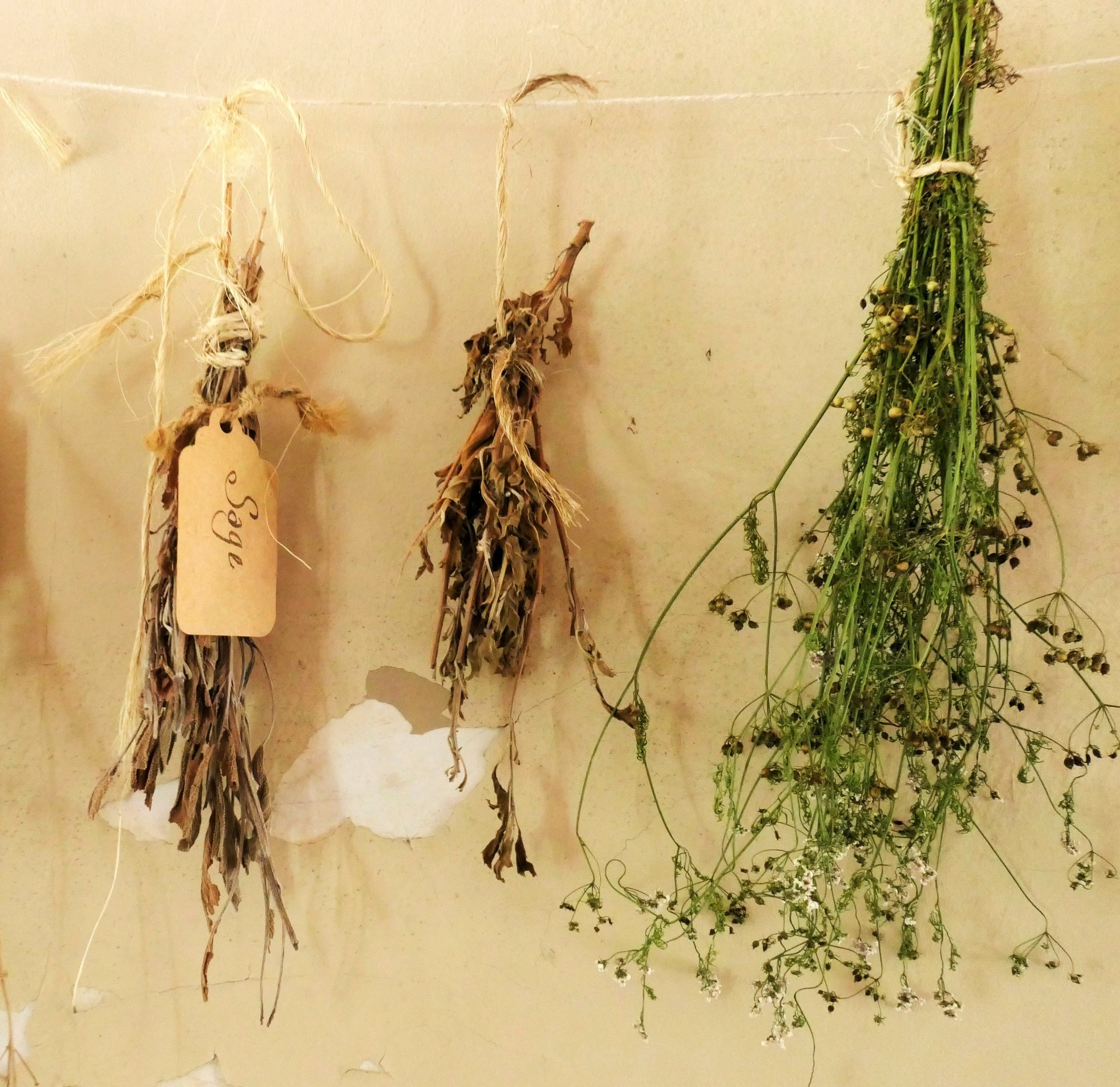 Begin drying herbs as soon as possible after picking as the leaves will start to wilt and lose flavour and colour. Gently rinse first to remove any soil then gently shake and pat dry to remove moisture. Throw out any leaves that are discoloured, damaged, or bruised.
Begin drying herbs as soon as possible after picking as the leaves will start to wilt and lose flavour and colour. Gently rinse first to remove any soil then gently shake and pat dry to remove moisture. Throw out any leaves that are discoloured, damaged, or bruised.
Drying herbs indoors is the easiest and most popular method especially for low-moisture plants like rosemary and thyme. This allows you to retain the most important qualities like flavour, colour, and smell. Simply tie the stems with string and hang them upside down in a cool, dry and well-ventilated spot away from direct sunlight. Avoid areas that are near kitchens, laundries or bathrooms as these areas are warm and moist.
Drying time varies between herbs, so don’t mix up your bunches! Generally, drying time ranges from 5 days to a few weeks, depending on how moist the leaves are. The herbs are sufficiently dried out when they become crisp and crumble easily, the fastest way to dry herbs is to hang them upside down in a paperbag which also allows you to stop seed heads from dropping to the floor and causing a mess.
Not thrilled at the idea of filling your home with bunches of drying herbs? Do you have limited space to hang them? You can try drying your herbs in your oven. This method works best for plants with a high moisture content like basil, parsley and mint. Turn the oven on at its lowest temperature. Lay the herbs on baking paper on a baking tray and place on the lowest level of the oven. Depending on the type of herb, it can take -2 hours to dry them out. You can get a feel for how ready they are by turning them frequently. When they are crisp but not burnt, and crumble easily, the herbs are done.
Once you’re sure they’re done, crush them into an air-tight container. You should either a lidded jar or a resealable plastic bag. Dried herbs have a more intense flavour than fresh herbs, so you may only need to use a quarter of dried herbs to the amount of fresh herbs you would normally use.
Wanting to grow your own herb garden? Whether you’ve got a spacious garden, a small entertaining area or an apartment balcony, Aumann’s Garden Supplies has the tools for you to grow your own herbs at home!

